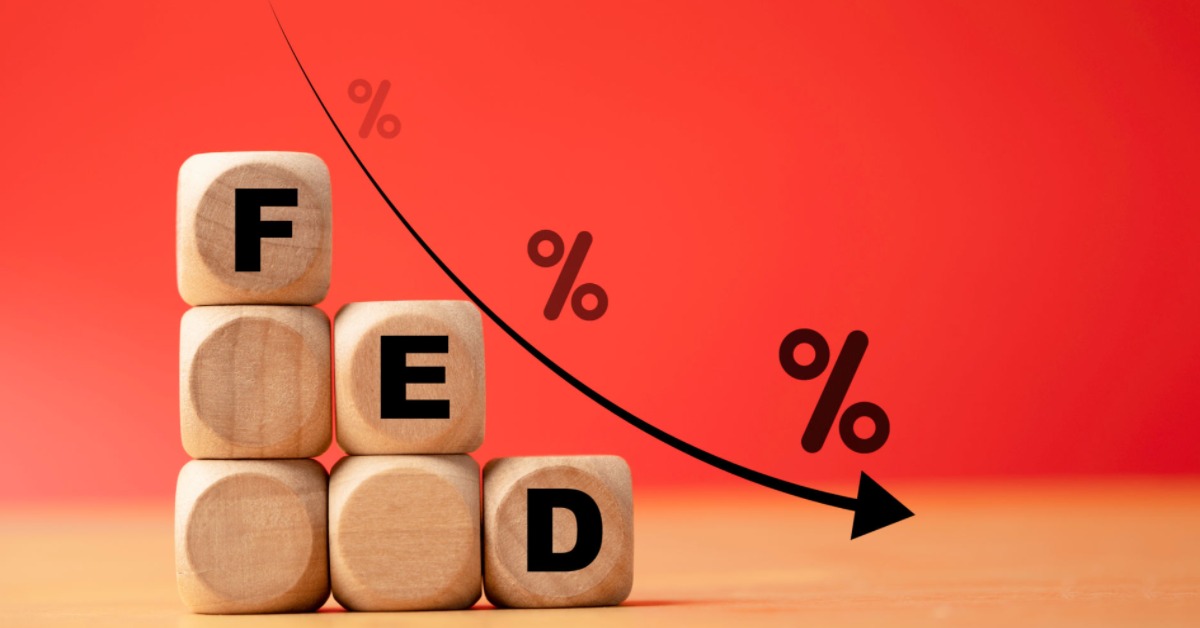If you're wondering what the future holds for interest rates, especially in the next couple of years, you're not alone. According to insights from Morgan Stanley, as discussed in a recent “Thoughts on the Market” podcast, interest rate predictions point towards the Federal Reserve cutting rates, but potentially later and more aggressively than the market currently anticipates.
While the market prices in roughly 100 basis points of cuts by the end of 2026, Morgan Stanley's economists foresee up to 175 basis points, beginning in early 2026. This article will break down their reasoning, explore the key economic factors at play, and discuss the potential implications for investors.
Interest Rate Predictions 2025-2026 by Morgan Stanley: A Deep Dive
The Fed's Tightrope Walk: Inflation vs. Economic Growth
The Federal Reserve's primary job is to manage inflation and promote maximum employment. These two goals often pull in opposite directions. Right now, they're trying to figure out where to strike that balance.
The recent Federal Open Market Committee (FOMC) meeting highlighted this balancing act. While the Fed decided to hold the federal funds rate steady (remaining within its target range of 4.25 to 4.5 percent), their projections suggest two rate cuts by the end of 2025, followed by fewer cuts in 2026 and 2027. Think of it like driving a car – you want to keep it steady, but sometimes you need to tap the brakes or the gas to avoid a crash.
Why Morgan Stanley Expects the Fed to Cut “Late, but More”
Morgan Stanley's perspective, particularly that of U.S. Economist Michael Gapen, is that the Fed will be patient before easing monetary policy, but when they do move, they'll do so with more force than some are anticipating. Here's a breakdown of their reasoning:
- Tariffs: Tariffs, the taxes on goods imported from other countries, introduce some tricky timing issues. They can initially push inflation higher because businesses often pass those costs onto consumers. This increase in prices can curb consumer spending. Gapen believes the Fed will first observe the inflationary effects before feeling the impact of slowing consumer activity.
- Immigration: Changes in immigration policy also play a role. Reduced immigration means lower growth in the labor force. So, even if the overall economy slows down, The unemployment rate might not increase as much as expected. This is because there are fewer people entering the job market. The Fed will likely see inflation now, followed by a weaker labor market later, according to Morgan Stanley.
- Fiscal Policy: Don't expect a huge boost to the economy from government spending. Current fiscal policies are not expected to lead to a big boost to growth, so the Fed can’t rely on that.
Putting it all together, Morgan Stanley believes the Fed will see inflation first and then a weaker economy. Therefore, the Fed will want to be sure that any increase in inflation is under control.
Tariffs: The Elephant in the Room
Tariffs were mentioned almost 30 times during the FOMC press conference, signaling their significant impact on the Fed's thinking. The Fed seems to be operating under the assumption of about a 14 percent effective tariff rate. According to Gapen, you can see the impact of tariffs on the Fed's forecast in three ways:
- Higher Inflation: The Fed expects inflation to move higher, especially during the summer months. As a result, they've revised their inflation forecasts upward to about 3.0% for headline PCE (Personal Consumption Expenditures) and 3.1% for core PCE.
- Transitory Inflation: The Fed seems to believe that the inflationary effects of tariffs will be temporary, expecting inflation to fall back toward their 2% target in 2026 and 2027.
- Slower Economic Growth: The Fed acknowledges that tariffs will likely slow down economic growth, leading them to revise their outlook for real GDP growth downward.
Geopolitics and Oil Prices: Throwing a Wrench into the Works?
The Middle East conflict, while mentioned only a few times in the FOMC press conference, adds another layer of complexity. A spike in oil prices due to geopolitical tensions could further complicate the Fed's job.
Historically, a 10% rise in oil prices (another $10 increase) can lead to a 30 to 40 basis point increase in the year-on-year rate of headline inflation. However, the evidence suggests limited second-round effects and almost no change in core inflation.
In other words, you might see a short-term jump in gas prices, which contributes to overall inflation, but it's unlikely to create a sustained inflationary cycle. Higher gas prices do eat into consumer purchasing power, reinforcing the likelihood of slower economic growth.
Market Pricing vs. Morgan Stanley's Predictions: A Disconnect
It must be remembered that market prices are merely an average across the different paths various investors believe are most likely. The fact that market prices reflect about 100 basis points of cuts by the end of 2026, contrasting with Morgan Stanley's forecast of 175 basis points, highlights a significant difference in expectations. The market is also pricing in some rate cuts for the current year, while Morgan Stanley anticipates the first cuts in early 2026.
This disconnect creates opportunities for investors who align with Morgan Stanley's view.
Yield Curve Implications: Lower Treasury Yields Ahead?
Morgan Stanley projects Treasury yields to move lower, starting in the fourth quarter of this year, aligning with their expected timing of the Fed's first rate cuts in early 2026. They anticipate the 10-year Treasury yield to end this year around 4% and end 2026 closer to 3%.
While the timing of this decline is subject to change, their conviction lies in the direction—lower yields are likely ahead. This suggests investors should start preparing for lower Treasury yields now.
The U.S. Dollar: Heading South?
Morgan Stanley expects the U.S. dollar to depreciate another 10% over the next 12 to 18 months, building on the roughly 10% decline it experienced in the first six months of the current year.
Geopolitical events, particularly those impacting energy prices, could influence this outlook. A significant rise in crude oil prices could benefit countries that are net exporters of oil and hurt those that are net importers. While the U.S. is somewhat neutral in this regard, a surge in energy prices could lead to a temporary pause in the dollar's depreciation.
My Take: Navigating Uncertainty with Informed Decisions
Predicting the future is a fool's errand, especially when it comes to something as complex as interest rates. However, analyzing the viewpoints of economic experts like those at Morgan Stanley can give us a valuable perspective. Here's what I would focus on when investing:
- Inflation Data: Closely monitor inflation reports, particularly the PCE index, to confirm whether inflation is indeed proving to be transient, as economists are expecting. Any deviation from this path may lead to significant revision in these predictions.
- Employment Figures: Pay attention to revisions and trends related to employment rates. If there's contraction, the Fed’s hand might be forced to cut rates more than anticipated.
- Global Factors: Stay informed about potential international developments. Since they impact the dollar, they indirectly also influence rates, inflation, and eventually growth.
Prepare for Interest Rate Shifts with Smart Real Estate Investments
As forecast by experts predict up to 175 basis points in interest rate cuts by 2026, the window for locking in profitable real estate investments is now.
Norada offers turnkey rental properties in stable, cash-flowing markets—helping you capitalize on today’s rates before they potentially drop further.
HOT NEW LISTINGS JUST ADDED!
Speak with a Norada investment counselor today (No Obligation):
(800) 611-3060
Recommended Read:
- Interest Rates Predictions for the Next 3 Years: 2025-2027
- Fed Projects Two Interest Rate Cuts Later in 2025
- Market Reactions: How Investors Should Prepare for Interest Rate Cut
- Interest Rate Predictions for the Next 10 Years: 2025-2035
- Will Mortgage Rates Go Down in 2025: Morgan Stanley's Forecast
- Interest Rate Predictions for Next 2 Years: Expert Forecast
- Interest Rate Predictions for the Next 12 Months
- Interest Rate Forecast for Next 5 Years: Mortgages and Savings
- When is the Next Fed Meeting on Interest Rates?
- Interest Rate Cuts: Citi vs. JP Morgan – Who is Right on Predictions?
- More Predictions Point Towards Higher for Longer Interest Rates




